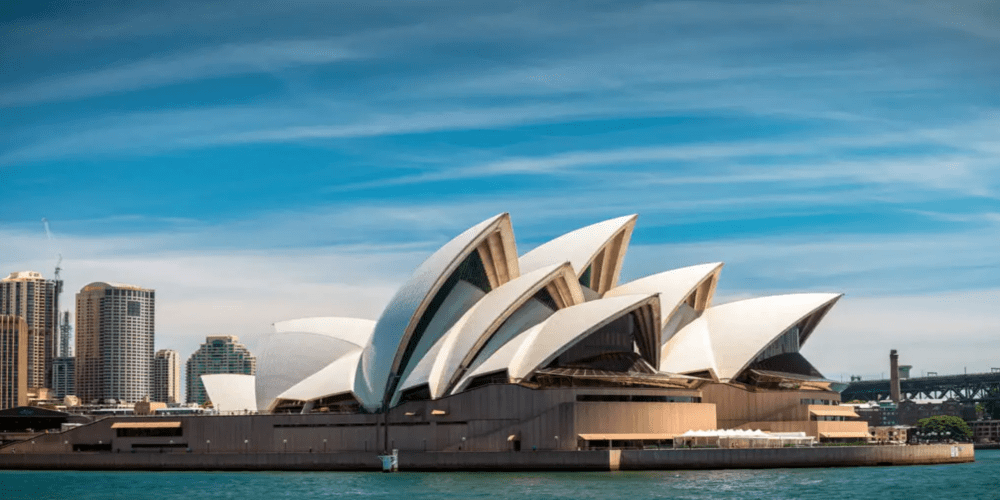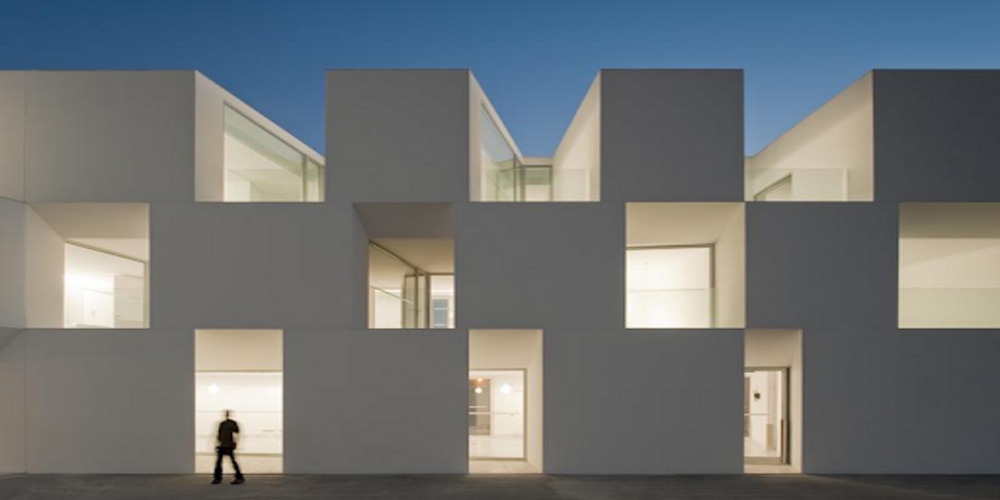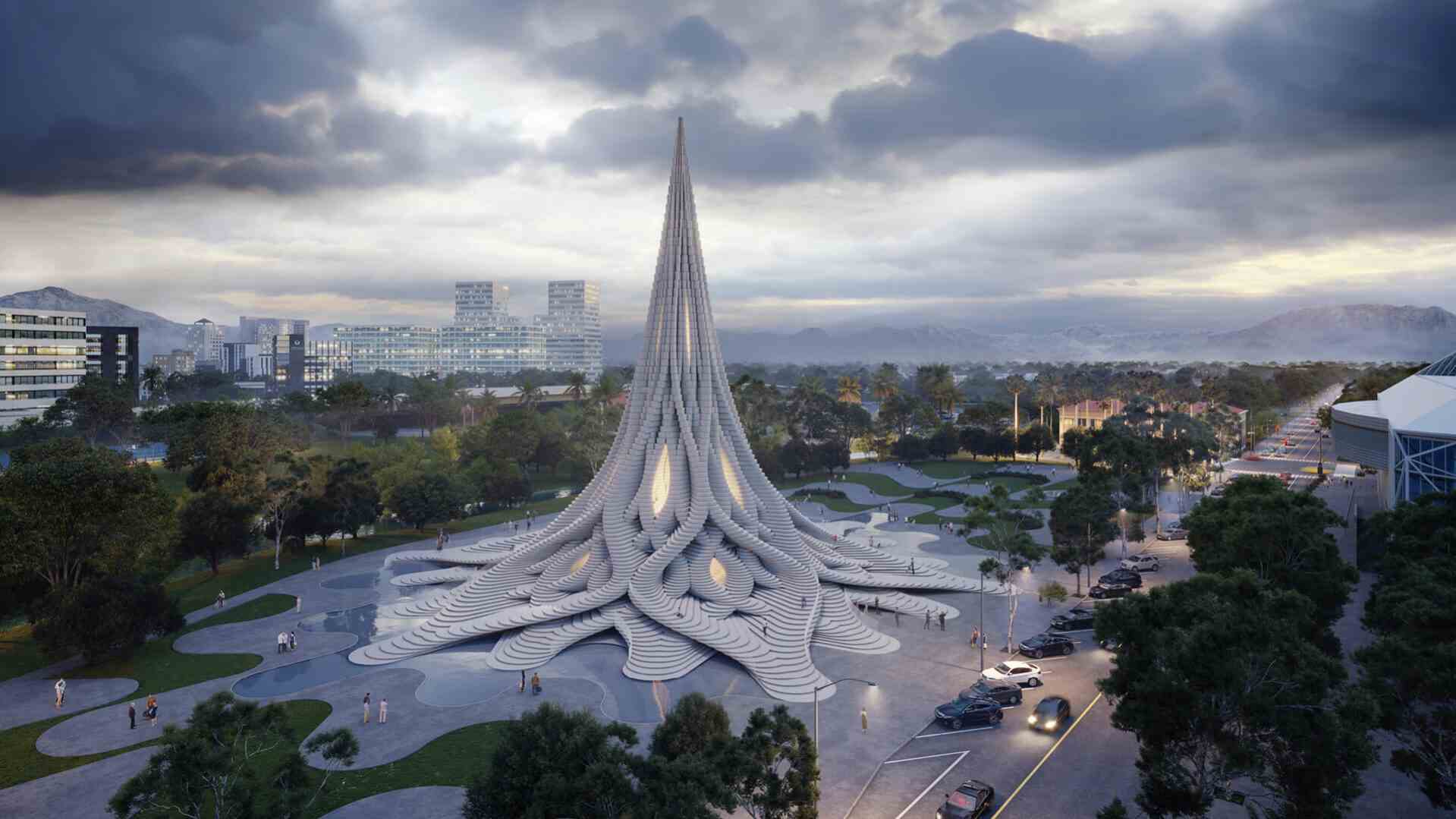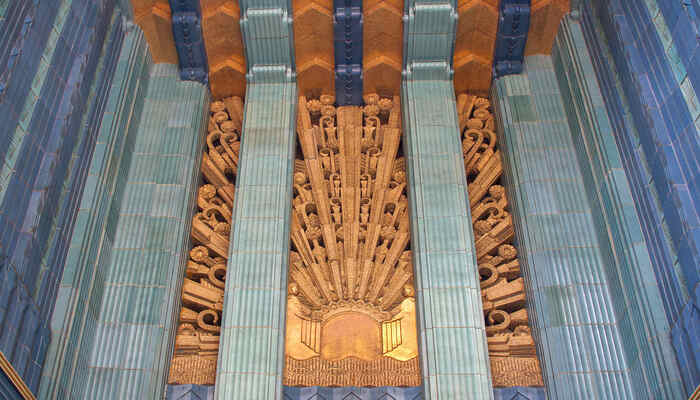Contemporary Architecture: Introduction, Types and Examples

Table of Contents
To walk through the journey of our built environment’s evolution compares to nothing less than a cinematic experience. From living in caves and building traditional mud houses to Greek and Roman styles, modern buildings, and now constructing neofuturistic designs and soaring skyscrapers, we have come a long way. The discovery and innovation of new building materials and the development and advancement of construction techniques and technology have been key contributors to this progress. Further, the availability of resources, in line with the economic, geographical, and socio-cultural context of a region, has influenced the design and construction of buildings. This helped inspire varied architectural styles through different ages of human history that reflect the values, beliefs, and ideas of the society which produced them.
Let’s have a look at one of the most prominent design styles of modern world- contemporary architecture.
What is Contemporary Architecture?

The origin of contemporary architecture can be traced to the modernist movement of the early 20th century. The contemporary architecture style is a broad and constantly evolving term that refers to the architecture of that particular present time. It is characterised by a diverse range of styles, materials, and techniques, and often incorporates next-gen design concepts and technologies. Contemporary architecture is rooted in modernist principles that lay emphasis on simplicity and functionality.
History of Contemporary Architecture
Contemporary architecture emerged in the late 20th century, evolving from modernist principles while embracing new materials, technology, and sustainability. It reflects dynamic designs, blending functionality with aesthetics. Unlike rigid modernist styles, contemporary architecture adapts to cultural and environmental contexts, making it more versatile and innovative.
- Global Presence: Contemporary architecture gained prominence after the 1970s and dominates urban skylines worldwide.
- Sustainability Focus: Over 40% of new buildings integrate green technology like solar panels and smart energy systems.
- Iconic Structures: The Burj Khalifa (2009) and The Shard (2012) exemplify contemporary architectural innovation.
Key Architectural Characteristics of Contemporary Style Architecture

Modern contemporary architecture has various subsets because it is not a single, monolithic style, but rather, a broad umbrella term that encompasses a range of different design approaches and philosophies. Within the world of contemporary architecture, there exist many sub-styles, each with their own unique characteristics and features. Having said that, all types of contemporary architecture styles are tied with a thread of commonly shared contemporary architecture characteristics and design principles as mentioned below.
1. Form and Shape
- Showcases unconventional, asymmetrical designs that deviate from traditional architectural norms.
- Emphasises open-plan layouts for greater adaptability and multifunctionality.
- Integrates smooth curves and fluid forms to create visually dynamic structures.
2. Materials and Textures
- Uses modern materials like glass, steel, and concrete for both aesthetics and durability.
- Prioritises eco-conscious materials, including recycled and renewable resources.
- Blends contrasting surfaces such as wood, metal, and stone to enhance visual appeal.
3. Integration with Nature
- Incorporates floor-to-ceiling windows and skylights to maximise natural light and outdoor views.
- Utilises green roofs, vertical gardens, and natural ventilation for sustainability.
- Designs outdoor spaces to seamlessly blend with architectural elements.
4. Technological Integration
- Implements smart home technology for automation and energy efficiency.
- Uses innovative building techniques and materials for improved performance and longevity.
- Incorporates renewable energy solutions like solar panels and wind turbines to reduce environmental impact.
5. Sustainability and Environmental Considerations
- Focuses on energy-efficient designs that minimise ecological footprints.
- Uses sustainable construction methods and eco-friendly materials.
- Integrates water conservation systems and passive solar design for enhanced sustainability.
Read: The Ultimate Guide to Prominent Global Architectural Movements and Styles
Interesting Facts About Contemporary Architecture
Contemporary architecture is ever-evolving, blending cutting-edge technology with sustainability and artistic expression. Unlike traditional styles, it prioritises adaptability, open spaces, and eco-friendly designs. Many contemporary structures incorporate smart materials, renewable energy sources, and biomimicry, making them not just visually stunning but also highly functional and efficient.
- Green Buildings: Over 50% of contemporary buildings now feature sustainable materials and energy-efficient systems.
- Smart Integration: Nearly 60% of modern architectural projects incorporate AI and IoT for automation.
- Innovative Designs: The Louvre Abu Dhabi (2017) and Bosco Verticale (2014) showcase futuristic and eco-conscious architecture.
Contemporary Architecture V/S Modern Architecture
Modern architecture emerged in the early to the mid-20th century and is characterized by its sleek, minimalist design and emphasis on functionality. The design philosophy behind modern architecture was influenced by the rapid industrialization and technological advancements of the time, resulting in buildings that embraced the ideals of efficiency and progress. It is rooted in the modernist movement and celebrates the use of new materials, such as steel, concrete, and glass. This architecture style often features open floor plans, large windows, and clean lines that create a sense of simplicity and harmony. Le Corbusier and Jorn Utzon were prominent modern architects in the 20th century.
On the contrary, contemporary architecture represents the architecture of the present time and is constantly evolving to reflect the current trends, innovations, and cultural influences. It is more fluid and diverse than modern architecture, encompassing a wide range of styles. Contemporary architecture pushes the boundaries of design by integrating advancements in technology, sustainability, and cultural context. It embraces experimentation, incorporates varied materials and forms, and often responds to the specific needs and characteristics of the site. Contemporary architects strive to create visually striking and contextually responsive designs that reflect the unique spirit of their time, resulting in a dynamic and ever-evolving architectural landscape.
5 Impressive Examples of Contemporary Architecture
There are innumerable examples of contemporary architecture around the world, some being developed while you read this blog. Enlisted below are five noteworthy examples of contemporary style architecture that offer unique perspectives. Let's take a closer look at these inspiring structures and see what makes them so impressive.
1. The Shard, London, United Kingdom

The Shard is skyscraper located in London, England, and is considered to be one of the most iconic examples of contemporary style architecture. Completed in 2012, the building is designed by the highly regarded Italian architect Renzo Piano.
Standing at 310 metres (1,016 feet), the Shard is presently the tallest building in the United Kingdom. The building's distinctive shape is characterised by a series of tapered glass shards that rise up from a broad base, giving the building its name. The design of the building was inspired by the spires of London churches and the masts of sailing ships on the nearby River Thames. The building features an observation deck on the 68th, 69th, and 72nd floors, offering scenic panoramic views of London.
The Shard owns a high-performance facade made up of a series of glass panels, changing in colours and appearance depending on the time of day and weather conditions. The glass panels also help to reduce the building's energy consumption by allowing natural light to flush the building's interior. Additionally, the building is equipped with sustainable features such as rainwater harvesting systems, low-flow water fixtures, and a green roof.
2. Beijing National Stadium, Chaoyang, China

The Beijing National Stadium (also known as the Bird's Nest) in Chaoyang, China, is a prime example of contemporary architecture. The stadium's facade is made up of a web-like pattern of steel beams that gives it the appearance of a bird's nest. The stadium has a seating capacity of 91,000 spectators and is one of the largest stadiums in the world.
Built for the 2008 Summer Olympics, the stadium is designed by the Swiss architectural firm Herzog & de Meuron in collaboration with the revered Chinese artist Ai Weiwei. It features a unique design that combines traditional Chinese architectural elements with modern construction techniques.
A striking architectural feature of the stadium is its translucent roof which is made up of a series of interlocking ETFE (Ethylene tetrafluoroethylene) cushions. They allow natural light to filter into the stadium during the day while also providing protection from the elements. The building incorporates a range of sustainable design features, including rainwater harvesting systems, solar panels, and a geothermal heating and cooling system. These elements help to reduce the stadium's energy consumption and carbon footprint, making it a model for green design in large-scale complexes.
Read: World's Greatest Stadium Designs
3. Walt Disney Concert Hall, Los Angeles, United States

Completed in 2003, the iconic Walt Disney Concert Hall is a classic example of contemporary architecture designed by the world-renowned architect Frank Gehry. Located in downtown Los Angeles, California, the concert hall is home to the Los Angeles Philharmonic orchestra and the Los Angeles Master Chorale. The building is made up of curving, metallic surfaces that dynamically reflect and refract light giving it a unique, sculptural appearance. The interlocking arrangement of panels creates the illusion of movement and fluidity.
Inside, the lobby areas feature large windows that allow natural light to flood in, while the auditorium itself features a series of skylights that flush the interiors with natural light during the day. The skylights are designed to be adjustable, allowing the hall's lighting designers to create a range of dramatic effects for every performance.
The main auditorium is arranged in a "vineyard" style, with seating arranged around the stage in a series of terraces that rise up to the ceiling. The walls and ceiling are lined with Douglas fir, which create a warm and inviting atmosphere. Designed to provide excellent acoustics and clear sightlines from every seat, the auditorium incorporates state-of-the-art technology to aid user convenience.
4. London City Hall, London, United Kingdom

London City Hall is designed by the globally prominent British architect Lord Norman Foster. Completed in 2002, the building serves as the headquarters for the Greater London Authority and is located on the south bank of the River Thames.
One of the most notable features of the London City Hall is its distinctive shape. The building is designed in the form of a sphere that has been sliced in half with its flat side facing the river. This unique shape allows for a range of different functioning spaces within the building, including offices, meeting rooms, and a public viewing gallery.
The exterior of the building is made up of a series of curved glass panels that allow for natural light to enter the building and provide views of the city. The building features solar panels on its roof that help the building become self-reliant. Alongside this, the building uses a range of water-efficient technologies to regulate its water consumption. The site has a well-landscaped area adorned with a range of plants, trees, and a paved plaza that provides a gathering space for visitors and local residents.
5. World Trade Center Transportation Hub, New York, USA

Designed by famous “starchitect” Santiago Calatrava, the World Trade Center Transportation Hub (also known as the Oculus) is an excellent example of contemporary architecture. The construction of the building was completed in 2016. The building houses high-end retail shops and restaurants, and a 9/11 memorial making it a destination for both, the daily commuters as well as international tourists.
The building serves as the primary transportation hub for the World Trade Center, connecting multiple subway lines and the Port Authority Trans-Hudson (PATH) trains to New Jersey. The structure is a massive, soaring steel and glass building, designed to mimic the image of a bird being released from a child's hand, symbolising hope and freedom.
A distinctive feature of the Oculus is its enormous white steel ribs that were specially pre-fabricated in Italy and shipped to New York, where they were assembled on-site. The ribs span across the main hall and support a glass roof that brightens the building's interiors with natural light. The building incorporates sustainable features such as energy-efficient lighting and heating systems, as well as rainwater harvesting and greywater reuse systems. The use of Building Information Modeling (BIM) processes allowed for precise construction and coordination of the various trades involved in the project.
Read: How Does BIM Benefit the Architecture, Engineering & Construction (AEC) Industry?
5 Types of Design Styles Included in Contemporary Architecture
Contemporary architecture is influenced by a wide range of factors, including cultural trends, technological advances, environmental concerns, and economic factors. This has led to the development of various design styles within the broader term of contemporary architecture as mentioned below.
1. Blobitecture

Blobitecture is a style of contemporary architecture that is characterised by the use of organic and curvilinear forms, rather than traditional geometric shapes. This style emerged in the late 1990s and is often associated with the use of digital fabrication technologies and cutting-edge materials. Blobitecture buildings often have a fluid and dynamic appearance, evoking a sense of movement and energy. The Museo Soumaya in Mexico City designed by architect Fernando Romero is a noteworthy example of this style.
2. High-tech Architecture

High-tech architecture, also known as structural expressionism, is a contemporary architecture style that emerged in the 1970s. This style is characterised by the use of advanced engineering techniques such as prefabrication and computer-aided design. High-tech buildings have a futuristic and industrial appearance, with exposed steel and concrete elements, and glazed facades. A famous example of high-tech architecture is the Centre Georges Pompidou in Paris, designed by internationally recognised architects, Renzo Piano and Richard Rogers.
3. Deconstructivism

Deconstructivism is a contemporary architectural style that emphasises fragmentation and the breaking down of traditional architectural forms. This style is characterised by buildings that appear to be disordered and chaotic, with elements of the building seemingly floating in space. Building designs based on deconstructivist principles feature non-linear shapes and angles, and the use of futuristic materials and textures. The Guggenheim Museum in New York, designed by one of this century’s most important architects, Frank Gehry is a classic example of deconstructivism in architecture.
4. Sustainable Architecture

Sustainable architecture, also known as green architecture is a subset of contemporary architecture. It seeks to minimise the negative environmental impact of buildings through the use of materials, technologies, and design strategies that have the least or no negative impact on the natural environment. It aims to reduce energy consumption, conserve resources, and create a healthy and comfortable indoor environment. This style of architecture is often associated with the use of renewable energy sources, such as solar and wind power, and the integration of natural systems, such as green roofs and rainwater harvesting. Suzlon One Earth in Pune, India designed by award-winning architect Christopher Charles Benninger, is an excellent example of sustainable architecture.
5. Post-Modern Architecture

Post-modern architecture is a style of contemporary architecture that emphasises the use of historical references and classical forms, while also incorporating contemporary elements. This style is characterised by buildings that play with scale, texture, and colour, often creating a sense of whimsy and playfulness. One of the most famous examples of postmodern architecture is the Portland Building in Oregon, designed by Michael Graves.
6 Leading Contemporary Architects Across the Globe
Architects across the globe are pushing the boundaries of design and technology to create remarkable buildings that define the face of contemporary style architecture. Here are 6 architects who are designing commendable and landmark contemporary buildings.
1. Lord Norman Foster

Lord Norman Foster is a formidable contemporary architect whose innovative designs incorporate cutting-edge technology with an emphasis on sustainability. His designs are often characterised by their ability to integrate with their surrounding environment. Foster has been recognized with numerous awards and honours throughout his career, including the Pritzker Architecture Prize, the Prince of Asturias Award for the Arts, and the Royal Gold Medal for Architecture from RIBA.
2. Frank Gehry

Frank Gehry, a recipient of the Pritzker Architecture Prize, is one of the most well-known and influential architects of the contemporary era. His signature style is characterised by the use of unconventional materials and bold, sculptural forms that challenge traditional architectural norms. Gehry is particularly renowned for his work with titanium, which he used to create the shimmering, undulating exterior of the Guggenheim Museum in Bilbao, Spain.
3. Zaha Hadid

Dame Zaha Hadid was a pioneering architect who became one of the most influential figures in contemporary architecture. Her signature design style was characterised by the use of bold, sweeping curves and fluid forms that challenged traditional architectural norms. Hadid was particularly skilled at creating buildings that appeared to be in constant motion, even when standing still. Her designs used cutting-edge construction technology and inventive material use, resulting in structures that were both visually stunning and highly functional.
Read: 10 Famous Female Architects Leading the Way in the AEC Industry in the Modern Day
4. Santiago Calatrava

Santiago Calatrava is an architect and engineer highly acknowledged for his remarkable sculptural designs. His work is characterised by the use of graceful, curving forms and a strong emphasis on structural engineering. Calatrava is particularly skilled at creating structures that appear to defy gravity, incorporating complex geometric shapes and intricate detailing to create buildings that are both functional and aesthetically pleasing. He has received the prestigious American Institute of Architects (AIA) Gold Medal and the Prince of Asturias Award for the Arts.
5. Richard Rogers

Richard Rogers is a celebrated British architect who has had a major impact on contemporary architecture. He is known for his modernist style, which emphasises functionality and transparency, and his distinctive use of materials and construction technology. Additionally, Rogers' designs often depict the use of bright colours and bold, geometric forms along with a commitment to sustainability. Roger has also been the recipient of the Pritzker Architecture Prize.
6. Jeanne Gang

Jeanne Gang is an American architect born in 1964 in Belvidere, Illinois. Gang is known for her distinguished approach to architecture, which often involves a deep understanding of natural systems and their relationship to the built environment. Her work spans a wide range of scales - from small-scale residential projects to large-scale urban planning initiatives.
In Conclusion
As we look to the future of contemporary architecture, it is clear that the field will continue to evolve and push the boundaries of design possibilities. With creativity, expertise, and commitment to excellence, contemporary architects are well-equipped to create buildings that lead by example. To enable this, computational design tools can be of great help.
Are you interested in creating excellent contemporary building designs? If yes, then check out Master Computational Design Course offered by Novatr. This course offers in-depth information about computational theory, advanced tools, and industry workflows.
Frequently Asked Questions:
1. Are contemporary and modern architecture the same?
No, they differ. Modern architecture refers to a style from the early to mid-20th century, emphasising minimalism and function. Contemporary architecture pertains to current designs, often blending various styles and focusing on sustainability and innovation.
2. How do you identify contemporary architecture?
Contemporary architecture is characterised by asymmetrical shapes, mixed materials, open spaces, and integration with natural light. It often includes eco-friendly features, advanced technology, and designs that blur the line between indoor and outdoor environments.
3. What is the purpose of contemporary architecture?
The purpose of contemporary architecture is to reflect current trends and technologies, prioritise sustainability, and meet the evolving needs of society. It aims to create functional, aesthetically pleasing spaces that harmonise with their environment and enhance the quality of life.

 Thanks for connecting!
Thanks for connecting!


.png)
.jpg)

-1.png)

